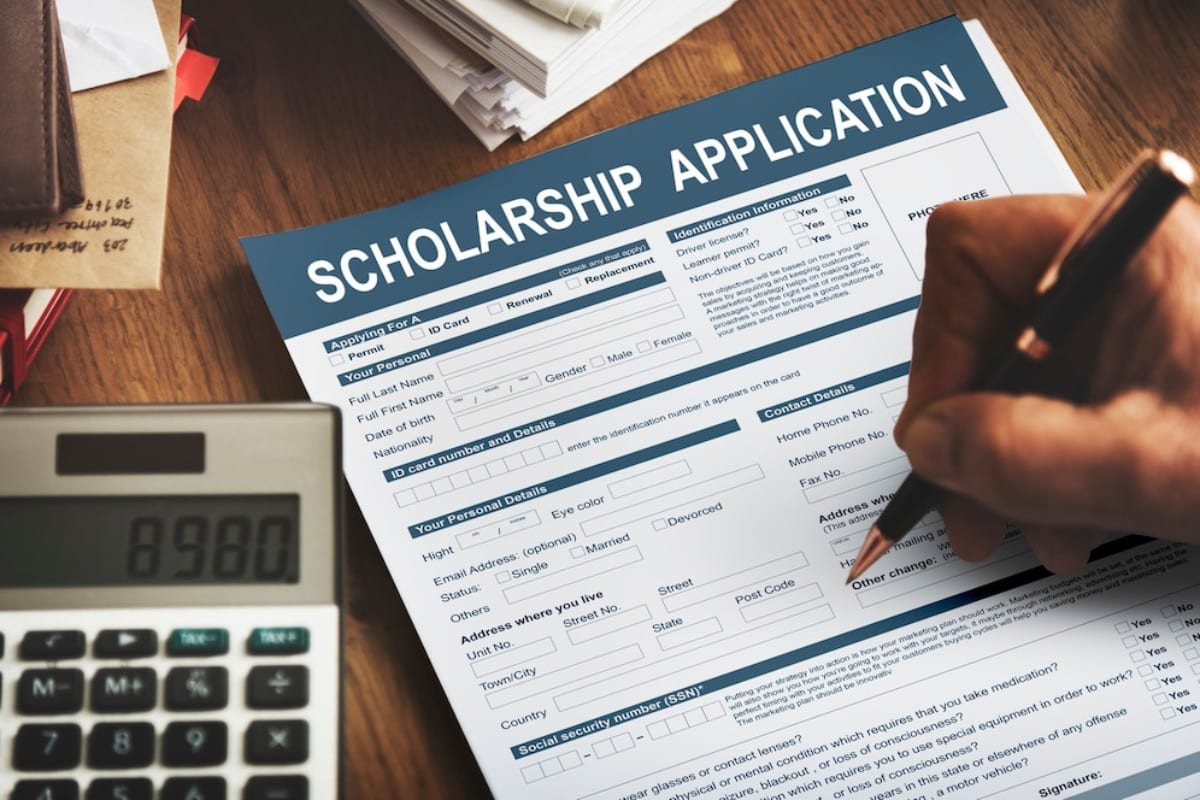
Essential Documents You Need for Scholarship Applications
Don’t Let Missing Paperwork Cost You a Scholarship
Imagine spending hours crafting the perfect scholarship essay, only to be disqualified because you forgot one document. It happens more often than you’d think — not because applicants are careless, but because the process can be confusing, especially when every scholarship asks for something slightly different.
If you’ve ever felt overwhelmed by the mountain of scholarship application documents, you’re not alone. From transcripts and personal statements to recommendation letters and proof of income, the paperwork can be dizzying. But the good news? Once you know what’s needed — and why — you can get organised, stay ahead of deadlines, and apply with confidence.
In this guide, we’re breaking down the required paperwork into clear, manageable sections. You’ll learn exactly what to include, how to prepare it, and common pitfalls to avoid. Whether you’re applying for academic merit awards, need-based aid, or niche scholarships, this scholarship checklist will make the entire process far less stressful — and much more successful.
Why the Right Documents Matter

It’s More Than Just Formality
Scholarship committees use documentation to verify your eligibility, assess your merit, and understand your story. Missing or incorrect paperwork can lead to delays or disqualification, no matter how strong your application is.
What Committees Are Looking For:
- Proof: Academic achievement, financial need, community involvement, or specific identity traits
- Credibility: Accurate, consistent, and verifiable information
- Commitment: Well-prepared documents reflect serious intent and professionalism
Now let’s look at what you actually need to prepare.
Core Documents You’ll Likely Need for Every Scholarship

1. Completed Application Form
This might sound obvious, but many students overlook parts of the application form or leave it incomplete.
Checklist:
- Typed or neatly written if submitting by hand
- All fields filled out — even optional ones if relevant
- Double-checked for typos and inconsistencies
- Saved in the requested format (PDF, Word, online form)
Always keep a backup of your application and save final versions in a “Scholarships” folder.
2. Personal Statement or Essay
Arguably, the most personal part of your application. This is where you tell your story, explain your goals, and demonstrate alignment with the scholarship’s values.
What to Include:
- Clear structure (introduction, body, conclusion)
- Specific examples from your life
- Your motivations, future plans, and how the scholarship helps
- Customisation for each application (no generic essays!)
Attach as a separate document if requested, and always respect the word count.
3. Academic Transcripts
This document is your official record of grades and coursework. Most scholarships want to see your performance to date.
Types of Transcripts:
- Unofficial: Often used in early rounds or online applications
- Official: Sent directly from your school/university or sealed/signed for hard-copy submissions
Tips:
- Request early — some schools take weeks to process
- Ensure all pages are included (especially if GPA/grades are spread out)
- Translate to English if necessary, using a certified service
4. Reference or Recommendation Letters
Scholarships often ask for one or two references who can vouch for your character, academic ability, or leadership.
Who to Ask:
- Teachers or professors
- Employers or supervisors (especially for community or work-based awards)
- Mentors, coaches, or volunteer coordinators
What to Provide to Your Referee:
- The scholarship name and focus
- Your CV and personal statement
- Key points you’d like them to mention
- Submission instructions and deadline
Bonus: Ask at least 3–4 weeks in advance — and always follow up with a thank-you message.
5. Curriculum Vitae (CV) or Résumé
This should be tailored for scholarship applications, focusing on academic achievements, extracurricular activities, and leadership roles.
What to Include:
- Contact information
- Education history
- Academic awards or honours
- Volunteering or community service
- Work experience (if relevant)
- Skills and languages
Keep it concise: 1–2 pages max, and format it clearly for easy scanning.
6. Proof of Identity
This helps verify that you are who you say you are and may also confirm your nationality or residency (which is often a requirement).
Examples:
- Passport
- Birth certificate
- National ID card
- Proof of immigration status (if applicable)
Provide a scanned copy unless otherwise stated, and check if notarisation is required.
7. Financial Documents (For Need-Based Scholarships)
If the scholarship is based on financial need, you’ll usually need to show evidence of income or hardship.
Common Requirements:
- Family income statements or P60s
- Tax return documents
- Proof of benefits or grants received
- Bank statements
- Written explanation of financial situation
Some scholarships may require forms filled out by a school administrator or financial aid officer — check the fine print carefully.
8. Proof of Eligibility (For Niche or Identity-Based Scholarships)
If you’re applying for a scholarship for a particular demographic, field, or interest group, you’ll likely need evidence.
Examples:
- Disability certificate
- Membership confirmation (e.g. youth group, cultural organisation)
- Portfolio of creative work (for arts scholarships)
- Proof of ethnic heritage (for culturally specific awards)
- Military family documentation (for veteran-related scholarships)
Always check what’s considered “acceptable” proof — it varies by provider.
9. Portfolio or Work Samples (If Required)
This is essential for creative scholarships or those related to writing, design, music, or art.
Suggestions:
- Include only your best work — quality over quantity
- Use PDF or high-resolution files
- Label files clearly with your name and the title of the piece
- Include short descriptions or context if needed
If submitting online, double-check file sizes and formats — some platforms have strict limits.
Optional but Helpful Additions
1. Cover Letter
Though not always required, a brief cover letter can reinforce your passion, thank the committee, and summarise why you’re a great fit.
2. Scholarship-Specific Forms
Some providers ask you to fill out supplemental questionnaires or agreements — always check attachments or portal updates.
3. Proof of Language Proficiency
For international applicants, especially in English-speaking countries, a TOEFL, IELTS, or other language certification may be necessary.
Organising Your Scholarship Documents

Set Up a Digital Folder System
Create folders for each scholarship with subfolders like:
- Application form
- Essay
- CV
- References
- Transcripts
- Financial docs
Use clear filenames: Essay_JaneSmith_BritishCouncil2025.pdf
Keep a Master Spreadsheet
Track:
- Scholarship name
- Documents needed
- Deadline
- Submission method (email, portal, post)
- Status (not started/in progress/submitted)
This small step can prevent big headaches later.
Common Mistakes to Avoid
- Submitting outdated documents (e.g. old CVs or expired transcripts)
- Ignoring formatting or file size instructions
- Not checking whether official versions are required
- Forgetting to update names/dates if you reuse documents
- Relying on just one referee and getting caught out if they delay
Real Story: How Emily Avoided Disqualification With a Simple Checklist
Emily, a sixth-form student from Birmingham, was applying for a STEM scholarship. She had a brilliant essay, great grades — but almost forgot to include a signed reference letter. The night before the deadline, she double-checked her folder using her checklist and spotted the missing file.
One quick call to her teacher — and an emergency email later — and she made the submission just in time. A month later, she got the award.
Her takeaway? “The checklist saved me. Without it, all that work might have gone to waste.”
Conclusion: Be Prepared, Be Strategic, Be Successful
Scholarship applications don’t just reward potential — they reward preparation. By knowing exactly what scholarship application documents you need, gathering them in advance, and organising them carefully, you set yourself up for success before you even hit ‘submit’.
Every missing transcript, forgotten letter, or rushed financial form can cost you a chance at life-changing support. But every completed checklist is a step closer to funding your dreams.
Got questions or tips from your own application experience? Drop them in the comments — your story might help someone else get that “congratulations” email.
Action step: Pick one scholarship you’re applying for and start building your document folder now. The best time to prepare was yesterday. The second best? Right now.


